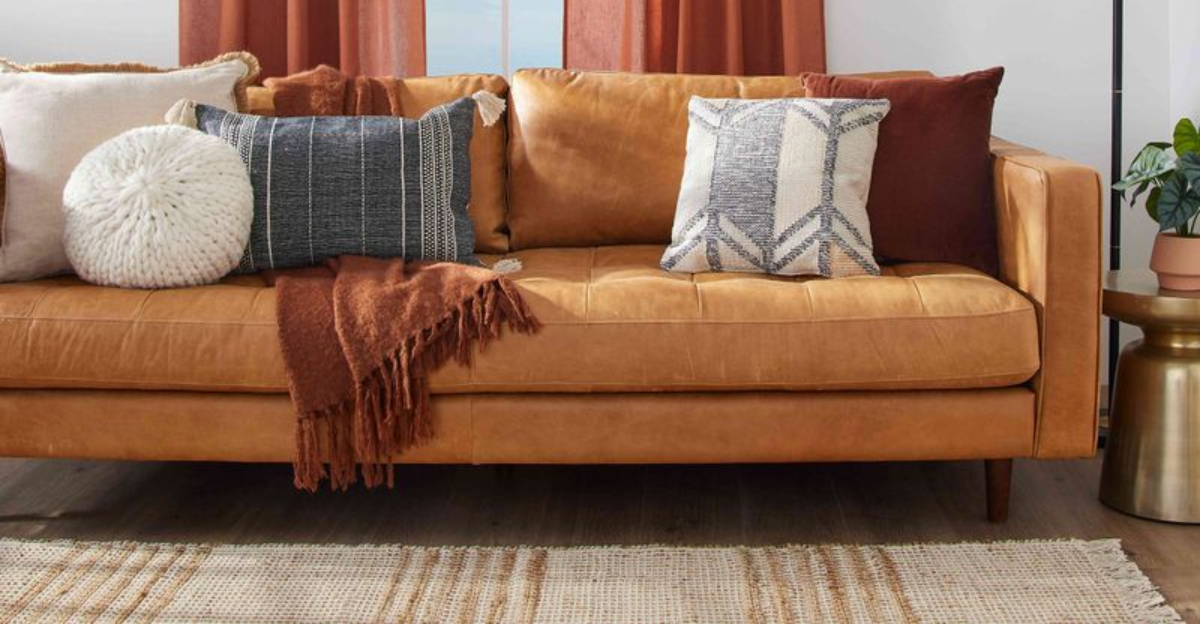Buying a couch is one of the biggest furniture investments you’ll make for your home. Not only is it typically the focal point of your living space, but it’s also where you’ll spend countless hours relaxing, entertaining, and maybe even napping!
Finding the perfect couch requires balancing style, comfort, and practicality – which is exactly what this guide will help you navigate.
1. Do measure your space carefully
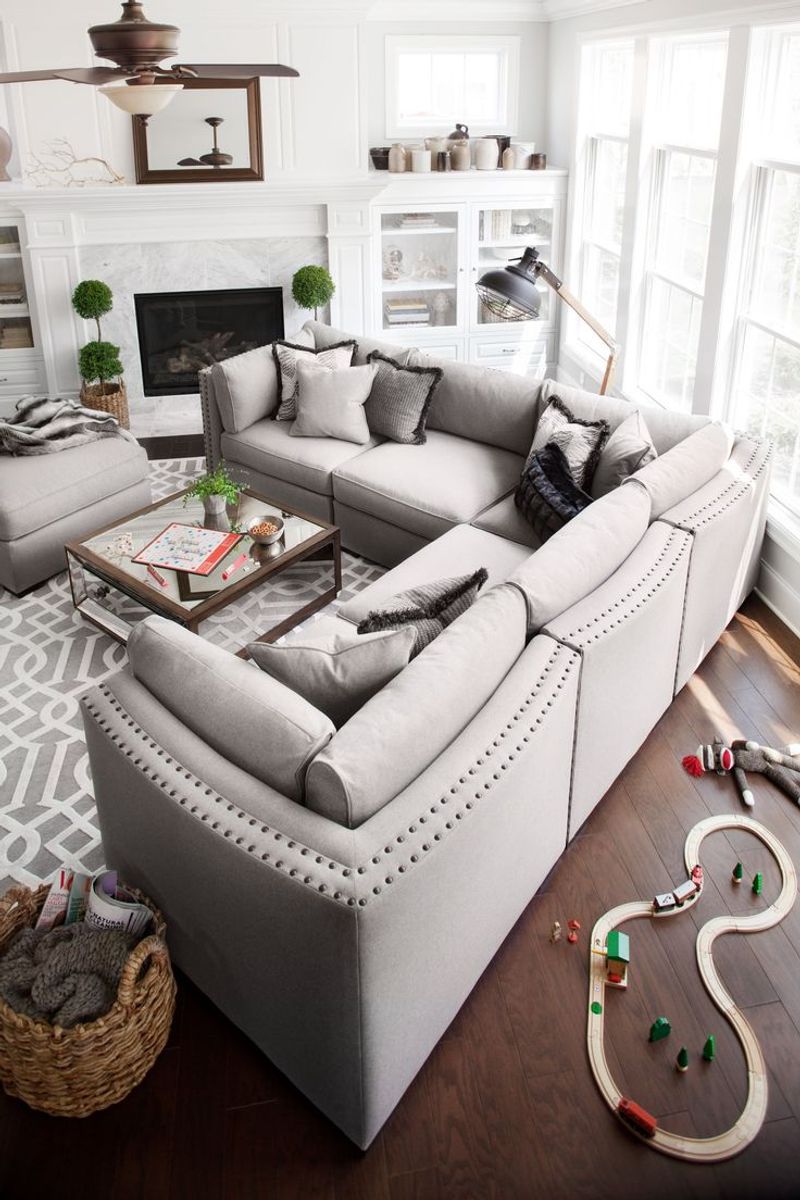
Grabbing a tape measure before shopping saves heartache later! Map out exactly where your couch will go and measure doorways, hallways, and stairwells it must pass through.
Jot these numbers down on your phone so they’re handy while shopping. A gorgeous sectional becomes a nightmare if it can’t make the turn up your staircase!
2. Do consider your lifestyle and usage
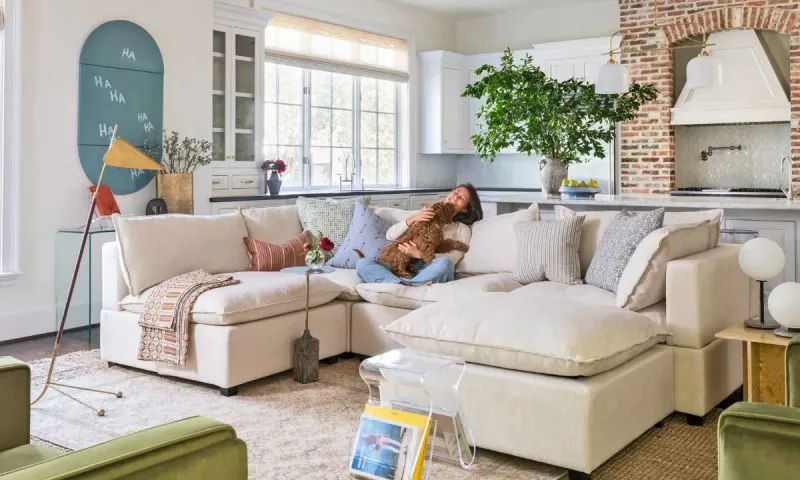
Movie marathons demand different seating than formal entertaining spaces. Ask yourself honestly how you’ll use the couch most days.
Families with kids might prioritize washable fabrics and durability, while empty-nesters could splurge on that white linen dream sofa. Single apartment dwellers might benefit from sleeper options for overnight guests.
3. Do choose a durable fabric
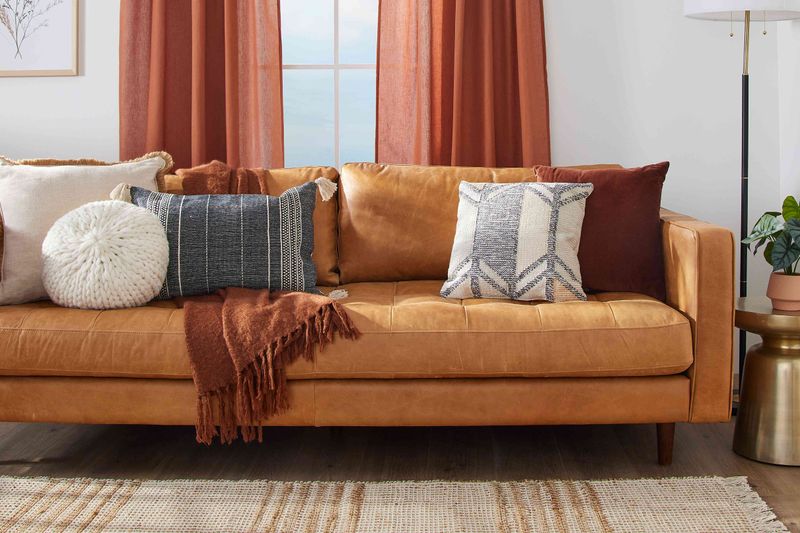
Fabric selection makes or breaks your couch investment. Performance fabrics with stain resistance work wonders in busy households with pets, kids, or frequent entertainers.
Microfiber offers affordability and easy cleaning, while leather ages beautifully with proper care. Natural fibers like cotton and linen look stunning but require more maintenance and aren’t ideal for high-traffic homes.
4. Do test for comfort before buying
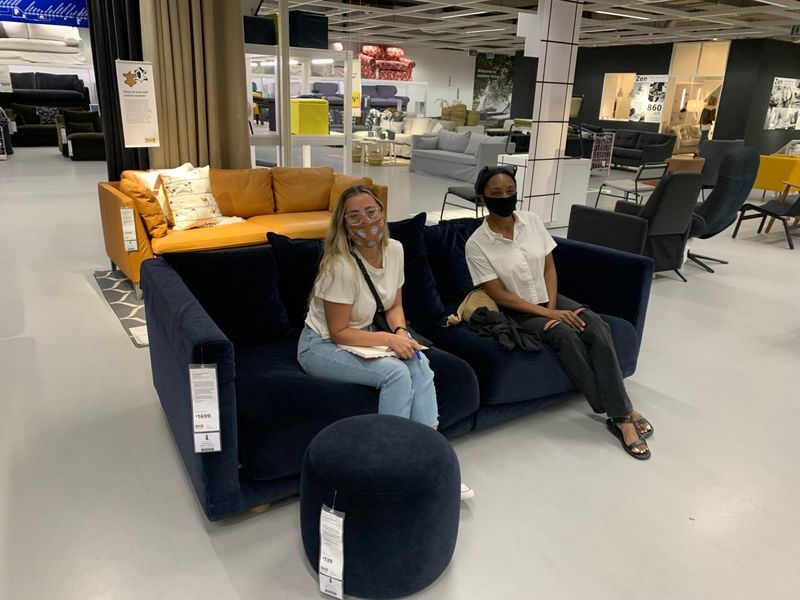
Virtual shopping can’t replace actually sitting on a couch! Visit showrooms and spend at least 10 minutes sitting, lounging, and even lying down if that’s how you’ll use it.
Pay attention to seat depth – shallow seats keep conversation areas proper while deep seats invite relaxation. Cushion firmness matters too – what feels supportive to one person might feel like a rock to another.
5. Do think about scale and proportion
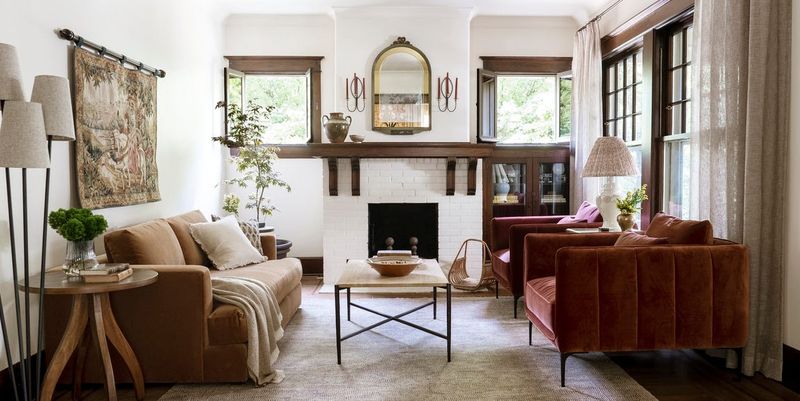
Massive sectionals overwhelm tiny apartments while dainty loveseats look lost in sprawling great rooms. Balance is key!
Low-profile sofas work beautifully in spaces with low ceilings or where you want to emphasize other architectural features. Higher-backed options provide more support and create visual weight in larger rooms with tall ceilings.
6. Do pick a timeless shape
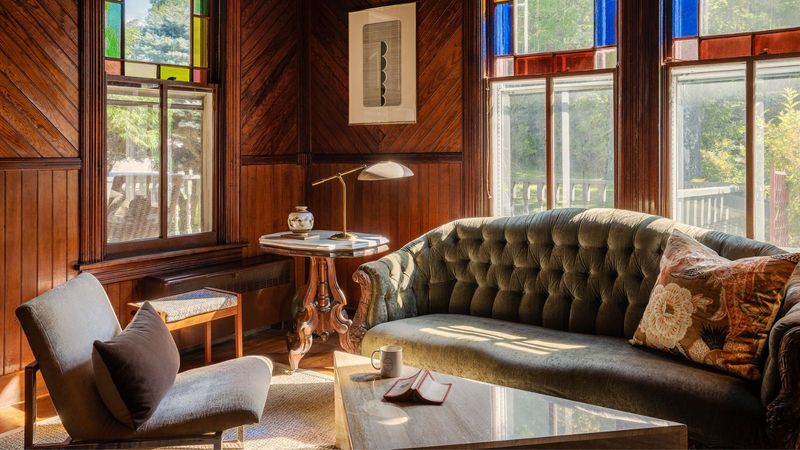
Wild trends come and go, but classic silhouettes stand the test of time. English roll arms, track arms, or subtle curved shapes rarely fall out of favor.
Investing in neutral, timeless forms allows you to update your look with pillows and throws as trends change. Remember you’ll likely own this piece for 7-15 years – will that ultra-trendy silhouette still spark joy in a decade?
7. Do coordinate with your room’s color palette
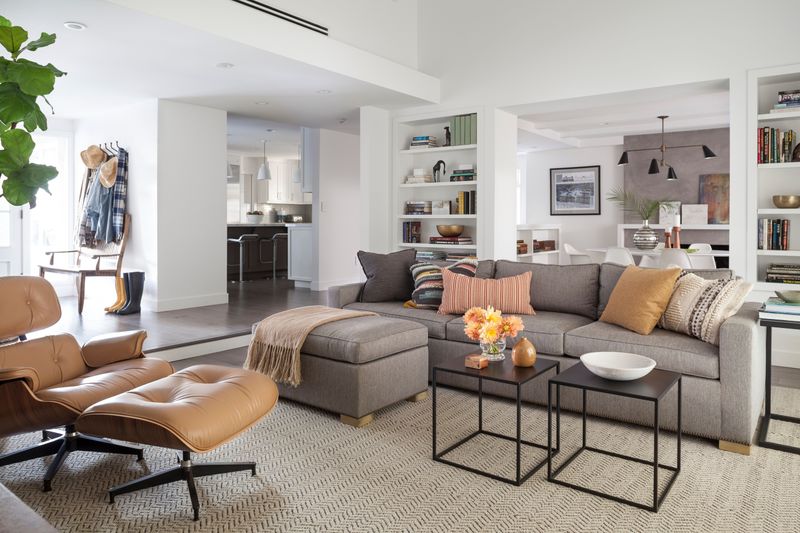
Sofas in neutral tones (gray, beige, navy, olive) provide versatile foundations that adapt as your style evolves.
Bold-colored couches make dramatic statements but require commitment! Sample swatches in your actual room – store lighting drastically alters how colors appear. Morning and evening light can transform that perfect taupe into an unexpected pink or green.
8. Do invest in quality construction
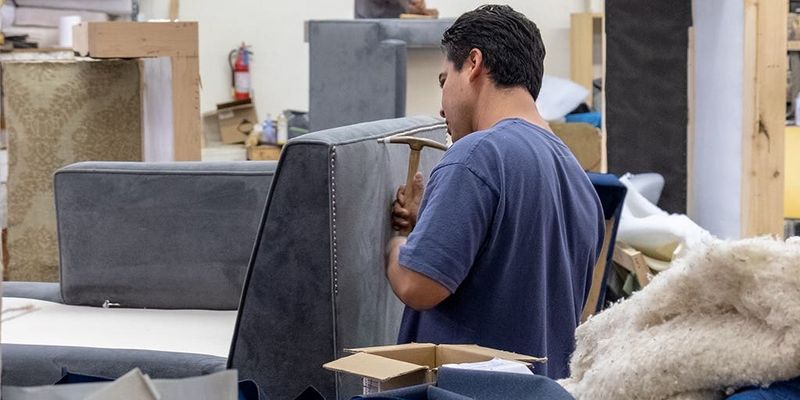
Hardwood frames outperform softwoods, while eight-way hand-tied springs represent the gold standard in sofa construction.
Cushions with high-density foam wrapped in down alternative offer the perfect balance of support and softness. Quality couches feature double-doweled joints, corner blocks, and kiln-dried lumber that prevents warping over time.
9. Don’t prioritize looks over comfort
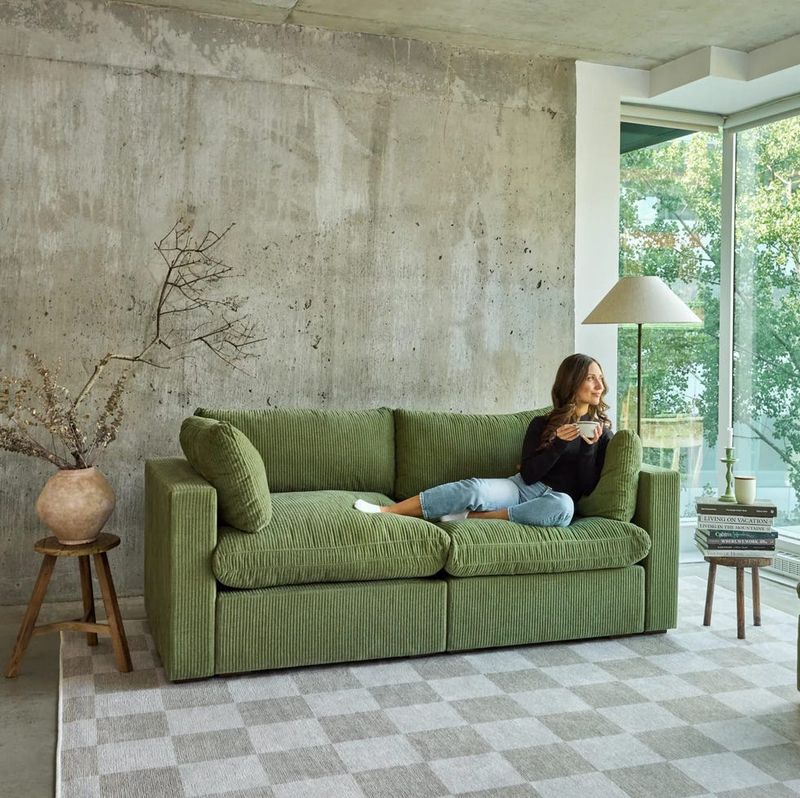
Instagram-worthy sofas can be torture devices in disguise. Gorgeous low-slung models with rock-hard cushions quickly lose their appeal when you’re actually trying to relax after work.
Uncomfortable seating discourages family gathering and relaxation – the primary purposes of your living space. Balance aesthetics with ergonomics by selecting pieces that support your body’s natural curves while still pleasing your eye.
10. Don’t ignore your room’s layout
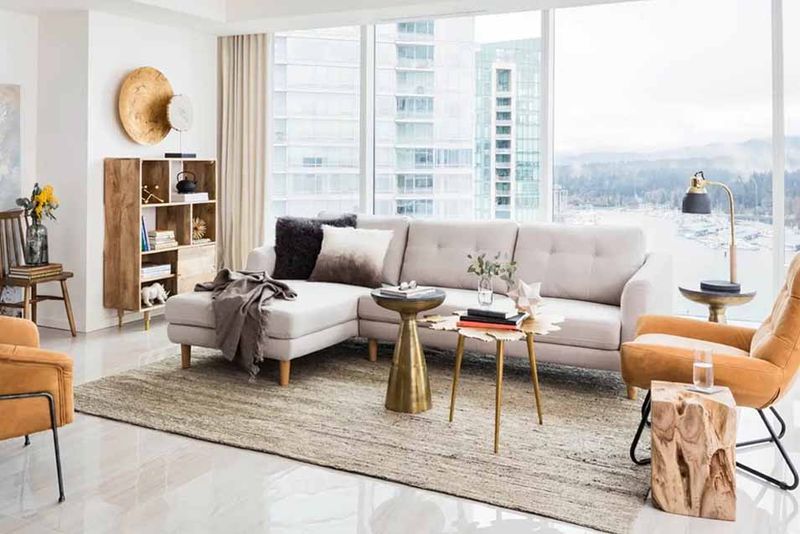
Floating a sofa in the middle of an open concept space creates very different requirements than placing it against a wall. Traffic flow around your seating determines what shapes work best.
L-shaped sectionals define areas beautifully but need room to breathe. Straight sofas offer flexibility for rearrangement. Rounded or curved options soften boxy rooms but consume more floor space than their measurements suggest.
11. Don’t go too trendy on a big-ticket item

Remember avocado green appliances? Ultra-trendy couches face the same fate! That eye-catching emerald velvet sectional might look dated faster than you can say “design regret.”
Save bold trends for easily changeable elements like pillows, throws, or smaller accent chairs. Quality sofas should last 7-15 years – choose something you’ll still love halfway through its lifespan when trends have cycled multiple times.
12. Don’t forget about entryways and door clearance
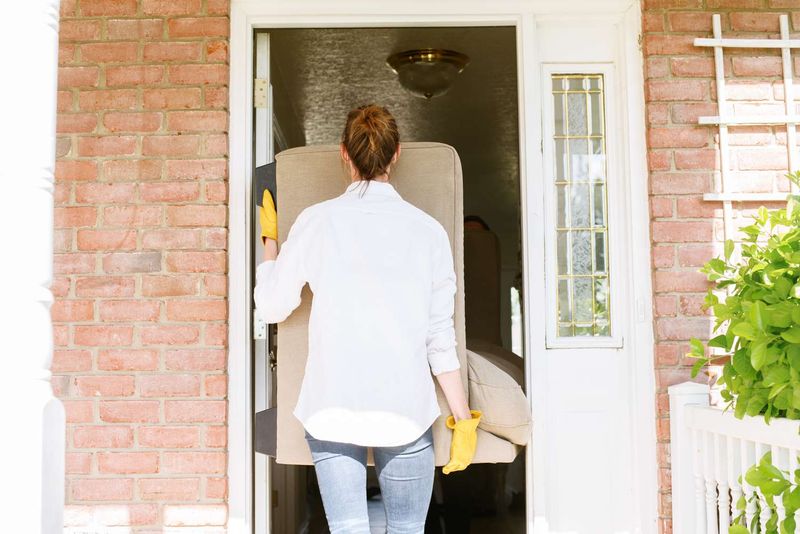
Heartbreak strikes when your dream sofa won’t fit through the door! Measure every doorway, hallway, elevator, and stairwell along the delivery path.
Many modern sofas feature removable legs or come in sections specifically to ease delivery challenges. Some companies even offer “apartment sofas” designed for tight urban spaces. Remember that tight corners pose as much challenge as narrow doorways!
13. Don’t overlook the importance of cushions
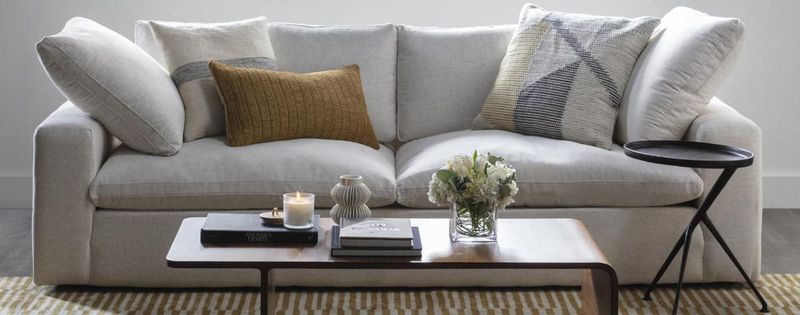
Cushion construction determines how your sofa ages over time. Foam-only cushions hold shape but can feel stiff, while all-down cushions feel heavenly but require constant fluffing.
Hybrid cushions with foam cores wrapped in down or fiber offer the best balance. Removable cushion covers simplify cleaning and extend your sofa’s life. Attached back cushions maintain a tidier appearance while loose ones allow for rearranging and fluffing.
14. Don’t choose impractical materials for kids or pets
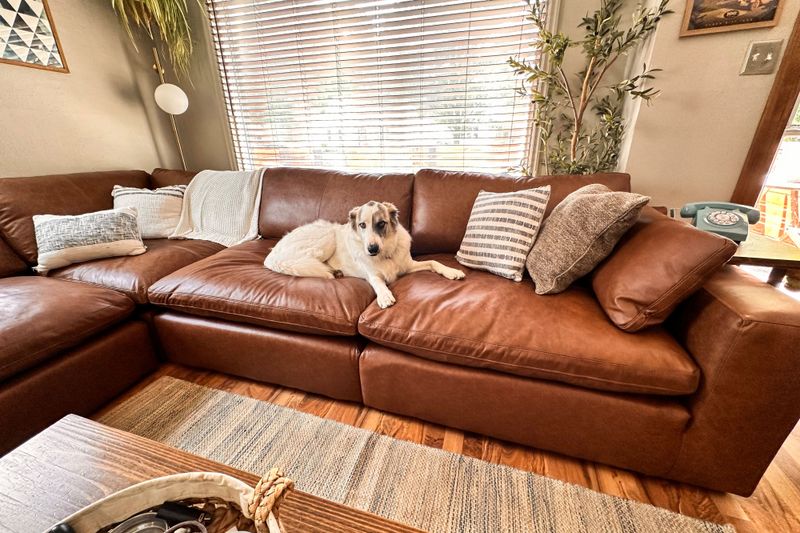
Velvet sofas and muddy paws make disastrous combinations. Be realistic about your household’s inhabitants before selecting delicate fabrics.
Leather surprisingly works well with pets (claws aside) as it wipes clean and doesn’t trap fur. Tightly woven synthetic fabrics resist snags from claws. Dark patterns camouflage inevitable spills and stains from little hands, while slipcovers offer ultimate protection for families in messy life stages.
15. Don’t rush the decision—try before you buy if possible
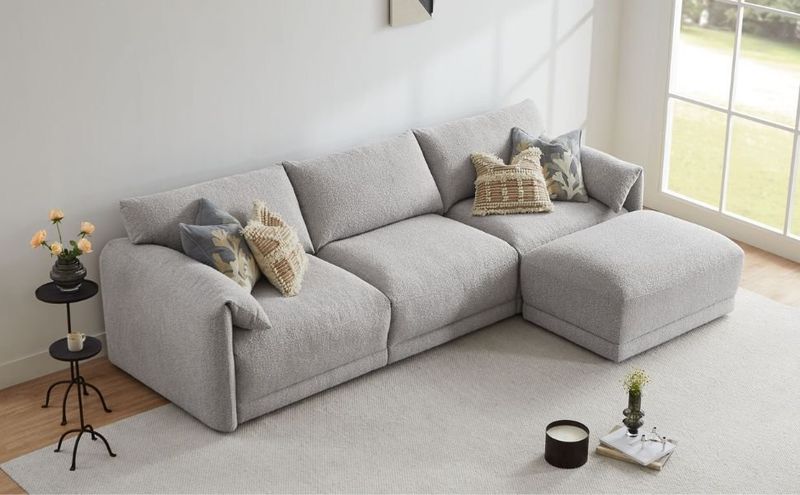
Take fabric samples home to see how they look in your actual lighting. Photos can be deceiving – what appears cream online might look stark white or yellow-tinged in your space.
Many retailers offer return periods, but large furniture returns involve hassle and potential restocking fees. Whenever possible, visit showrooms to sit, lounge, and experience potential purchases firsthand before committing.

